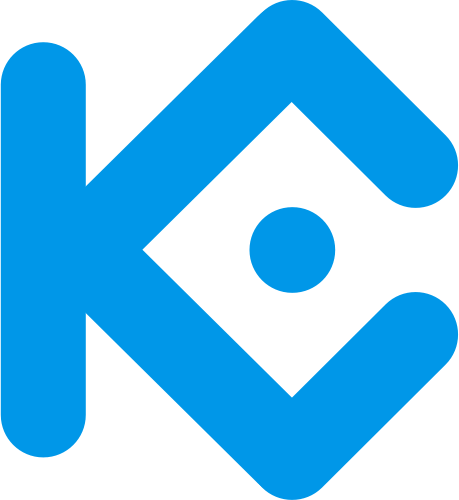Kadena (KDA) Live Price

Market capitalization of a coin is calculated by multiplying the current price in USD or EUR of a single unit of coin by the current circulating supply of that coin available for sale or purchase on public exchanges.
Ex: If the price of BTC is currently $20,000 and there are 50,000 BTC available on public exchanges, then the Market Cap of BTC is $1,000,000,000.
Volume of a coin is the total spot trading volume reported by all exchanges over the past 24 hours multiplied by the value of an individual unit of that coin.
Circulating supply is the approximate number of units of a coin that are currently circulating in the market in the hands of the general public.
Release date is when the first tokens of this cryptocurrency were created and made available for mining or whatever other creation mechanism was specified in this token’s blockchain protocol.
Data provided by Coingecko API
KDA price Statistics
Kadena Price Today
Price Change
The percent change in price for this asset compared to 24 hours ago
Trading Volume
Popularity is based on the relative market cap of assets.
Kadena Supply
Circulating supply shows the number of coins or tokens that have been issued so far.
Kadena Market Cap
Market cap is calculated by multiplying the asset's circulating supply with its current price.
Fully Diluted
Market Cap
Kadena Price Yesterday
Kadena Price History
The highest price paid for this asset since it was launched or listed.
Data provided by Coingecko API
KDA to USD converter



Data provided by Coingecko API
Real-Time Kadena Price Chart (KDA to USD)
Kadena Exchanges
Exchange | Price | Pair | Spread | 24 Volume | Last Traded |
|---|---|---|---|---|---|
 Binance | $0.42 | KDA/USDT | $0.0004 | $3,569,402 | Recently |
 Gate.io | $0.42 | KDA/USDT | $0.001 | $578,500 | Recently |
 KuCoin | $0.42 | KDA/USDT | $0.0003 | $573,893 | Recently |
 Binance US | $0.43 | KDA/USD | $0.0022 | $9,834 | Recently |
 Binance US | $0.41 | KDA/USDT | $0.0306 | $5,042 | Recently |
Kadena Historical Price Data (USD)
Date | ||||
|---|---|---|---|---|
2025. 3. 9. | $0.472398 | $0 | $0.474304 | $0.421585 |
2025. 3. 8. | $0.482893 | $0.472398 | $0.487269 | $0.471668 |
2025. 3. 7. | $0.489898 | $0.482893 | $0.503437 | $0.464096 |
2025. 3. 6. | $0.506492 | $0.489898 | $0.514633 | $0.484833 |
2025. 3. 5. | $0.48 | $0.506492 | $0.517919 | $0.474111 |
2025. 3. 4. | $0.491519 | $0.48 | $0.491519 | $0.453262 |
2025. 3. 3. | $0.572121 | $0.491519 | $0.572121 | $0.487245 |
Data provided by Coingecko API
KDA Price Live Data
The live price of KDA is $ 0.419094 per (KDA/USD) today with a current market cap of 129.91M USD. 24-hour trading volume is $ 10,362,531 USD. KDA to USD price is updated in real-time. Kadena is -5.53% in the last 24 hours. It has a circulating supply of $ 309,072,970 KDA.
Kadena Coin Price Chart determines the exchange rates between major fiat currencies and cryptocurrencies – including BTC, ETH and XRP to USD, EUR, GBP. Conversion rates are based on Live KDA Price Index and the price indices of other digital assets.
This content and any information contained therein is being provided to you for informational purposes only, does not constitute a recommendation by Coinbase to buy, sell, or hold any security, financial product, or instrument referenced in the content, and does not constitute investment advice, financial advice, trading advice, or any other sort of advice.
What is Kadena?
Often shortened as KDA, the Kadena coin is a proof of work blockchain. It operates by offering a scalable version of Bitcoin while combining PoW consensus mechanisms with something else known as a directed acyclic graph (DAG) – both originating from Bitcoin.
According to the team, Kadena is designed to provide maximum safety and security for Bitcoin while offering unprecedented throughput, thus enabling a blockchain network that is highly useful to both entrepreneurs and enterprises alike. KDA is built on a unique infrastructure decentralized for the purpose of widespread adoption owing to its multi-chain approach.
Apart from security, Kadena also boasts of offering industrial scalability, which is targeted at supporting financial systems on a global scale. Hence, KDA itself can be scaled whenever the need arises. Amidst other features, Kadena promises to remain energy efficient at scale and ensure the smooth processing of more transactions while expending the same energy input, which is a significant difference from Bitcoin. Furthermore, KDA offers cryptocurrency gas stations, enabling businesses to cater to their customer’s gas fees, ultimately eliminating the bottlenecks of adopting blockchains for businesses.
Although, Kadena already had its network scaled in the past, most notably from 10 to 20 blockchain, it doesn’t rule out the possibility of doing so again, probably in the future. The latest feature added to Kadena is the private Kuro layer-two blockchain. This addition aims to strengthen KDA to support more than 8,000 transactions every second across 50 different nodes.
Who Are the Founders of Kadena?
Kadena was founded in 2016 by prominent members of JP Morgan’s blockchain development. Stuart Popejoy and his counterpart Will Martino were the most notable among this team. Stuart was the blockchain lead with 15 years of experience building trading systems and infrastructures in finance.
Will was the tech lead of the Cryptocurrency Steering Committee of the US Securities and Exchange Commission and the lead engineer at JP Morgan’s blockchain prototype, Juno. Dr. Stuart Haber was another key personality who played a huge role in the KDA project as he was the co-inventor of blockchain technology and the most cited author in the Bitcoin whitepaper.
Since its existence, Kadena has raised the bar in terms of funding. Interestingly, Kadena has indeed raised a whopping amount of $15 million, all from building massive earnings generated from the private token sales in the form of simple agreements for future tokens (SAFTs).
Why Is Kadena Unique?
With its incredible feature of combining two separate consensus mechanisms, Kadena has maintained a unique status offering public proof of work with an unmatched level of throughput.
How is this achieved?
It is simply by braiding chains together. This means that KDA offers up to about 20 different blockchains that function simultaneously and asynchronously to ensure the validity of every transaction on the platform. As a result, Kadena is able to mint multiple blocks simultaneously, which automatically increases its throughput. Consequently, this further leads to increased security as the time of a potential attacker is reduced between block confirmations.
Most notable is the direct acyclic graph structure employed by Kadena to theoretically scale from one proof of work blockchain to an unlimited account. Although the DAG structure may be fixed and multi-channeled, it’s a strong signal that Kadena’s blockchain supports communication with three different peer chains instead of confirming transactions at random. Consequently, this leads to an improved level of scalability and real-world performance.
Another unique feature of Kadena is that it can scale when required based on the ever-changing needs of its users. However, the adoption rate is the only limitation as scaling and addition of blockchains subjects the network to a hard fork. Theoretically, KDA can scale up to 50 or even 100 blockchains if it demonstrates continued adoption. This process of scaling isn’t automatic but is usually necessitated by congestion. Once this happens, the fees rise immediately, and the miners form a DAO to work hand in hand to reconfigure the network to a larger size.
How Is the Kadena Network Secured?
Kadena employs a Chainweb, a chain architecture, to ensure its security by combining several proof-of-work blockchains. There are up to three peer chain blocks in each chain, which ultimately increase throughput in a linear pattern and add new chains. These boost securities as Kadena chains employ an approach that displays a transaction history across chains in one view. Any attacker or potential threat that wants to break into the security of KDA would do a lot for not just one chain but all the running chains to attack one.
Kadena also employs Pact as a smart contract language. Pact is a human-readable specifically built for blockchains with high-end security features.
There you have it! Perhaps some of the things you want to know about Kadena.
Crypto fear & Greed Index

Historical Values
Next Update
The next update will happen in:
8 hours, 14 minutes and 22 seconds
Gainers & Losers
Data provided by Coingecko API
Popular Cryptocurrencies
Data provided by Coingecko API
More Cryptocurrencies
Data provided by Coingecko API
















